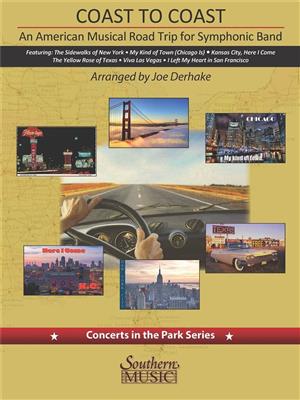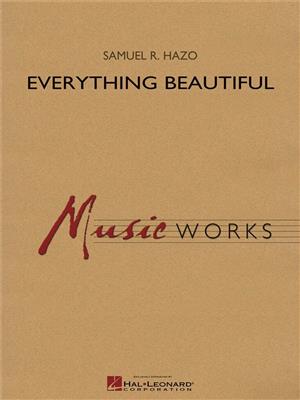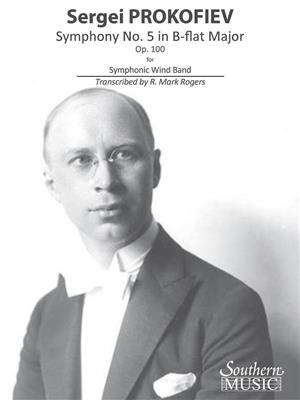Results
-
 £252.10
£252.10Abstractions - Torstein Aagaard-Nilsen
The titles of this three-movement work are abstractions where visual experiences are thought to be recreated as music, i.e. an abstract presentation of a motif, similar to an abstract image where one cannot immediately see the similarity.The first movement is inspired by the northern lights. It constantly changes in colour and shape.The title of the second movement is a play with the word "rock" is a well-known word describing a musical genre.But it is also a giant stone or a part of a mountain.The titles of this three-movement work are abstractions where visual experiences are thought to be recreated as music, i.e. an abstract presentation of a motif, similar to an abstract image where one cannot immediately see the similarity.
Estimated dispatch 7-14 working days
-
 £193.20
£193.20CASTRVM - Lionel Beltrán-Cecilia
CASTRVM is a symphonic episode inspired by four of the main civilizations that have coexisted over time in Ulldecona's Castle. With its melodies and sound effects, the composer tries to transport the listener through a trip to four uninterrupted movements, from the beginnings of this small settlement, creating a natural atmosphere recreated by the voice and the singing of birds to take us into the history with the first inhabitants, the Iberians, giving strength to the introduction of the composition, to move on to the time of the Andalusians, which with a melody in the form of a dance marked by percussion will transport us to take a walk in the surroundings of its circular tower. Next, and with strength, we arrive at the medieval and Christian period, marked in the score by the brass instruments, in this fragment we find moments that take us into the church of "Santa Mara de los ngeles", with melodies that evoke resonance and pomposity, continuing until we find the immense square tower, symbol of the fortress and homage, finally used as a prison and arsenal of those times. Then, there is a small slow march that will move us to some measures of strong stridency to finish with the whole section of low brass having its great moment of prominence, down to we reach the last part, Qna, a name that is recited during the musical piece and one of the names given in the past to the area that could be seen from the castle, where the change of location of the new town is recreated leaving the castle site, but always looking at it with respect and admiration as at the beginning of what is now the current Ulldecona, in this part, the composer plays a bit with a very well-known and significant melody for the inhabitants of Ulldecona, the "Jota Vieja", first making a reflex effect of all its melody and then only with the first six notes of this one, which builds a bridge until reaching the march and, later, the grand finale of this symphonic episode. The work was commissioned by Ulldecona Town Council and the Ulldecona Music Band, led by its conductor Joan Nadal i Girona, to commemorate the 800th anniversary of the donation of the Town Charter of Ulldecona "the old" (1222-2022), as part of the PATRIMONIUM 20.22 programme, "La Banda (Sonora) del Castell" (The soundtrack of the Castle).CASTRVM consists of: I.Iberians: stone and ironII.AndalusiansIII.The square tower: fortress and homageIV.Qna
Estimated dispatch 7-14 working days
-
 £87.40
£87.40It All Starts Here - Geert Schrijvers
This composition was commissioned by the city of Breda and the organisers of La Vuelta. When I tried to capture the essence of riding a grand tour, I thought of three important things: Strength, Courage and Perseverance. And this applies not only to sport, but to all major challenges in life. Everything starts - and ends - with this. All this formed the basis for the dual title of this work: It All Starts Here - Strength, Courage, Perceverance
Estimated dispatch 7-14 working days
-
 £72.99
£72.99Music from Stranger Things
The popular TV series Stranger Things has reminded us of some of the great songs from the 1980s! With songs supporting key moments in the storyline, here is an emotion-packed medley of classic rock hits along with the iconic theme. Includes: Stranger Things Main Theme Should I Stay or Should I Go Master of Puppets Separate Ways (Worlds Apart) and Running Up That Hill.
Estimated dispatch 7-14 working days
-
 £119.99
£119.99Rotterdam 1945 - Johan de Meij
Rotterdam 1945 was written at the request of Maestro Arjan Tien, the chief conductor of the Marine Band of the Royal Netherlands Navy, to commemorate their 75th anniversary in 2020. 1945 also marked the end of World War II, the year that my home country Holland was liberated from Nazi Germany. My father was born in Rotterdam in 1910, so I have a special bond with this dynamic city. I have used the numbers 1-9-4-5 to create the main theme and translated it into a four-note motif: C - D'- F - G.
Estimated dispatch 7-14 working days
-
 £183.20
£183.20La Ville Blanche et Bleue - Stig Nordhagen
This piece is a kind of flashback on my experiences of my time as an amateur musician in my hometown of Gjvik (often called "The White City"). It was at a time when the expressionas had to be created by myself and the music performed by the band ("The Liverflower") was a kind of a voyage of discovery for a young boy. A lot of the music I played at that time has shaped me as composer and musician. I remember the beautiful melodies and the rhythmic passages with a nostalgic smile. Maybe this music can make an impression on new generations of band musicians.
Estimated dispatch 7-14 working days
-
 £89.99
£89.99Coast to Coast: An American Musical Road Trip
Travel across the country from New York to San Francisco and points in between, as this medley drives you through some of the best-known songs about U.S. cities and states in just a few minutes! Just be sure to hold onto your seat. Though the ride begins with a smooth cruise, there are a few tricky curves in the road ahead, and maybe even an Easter egg or two. Featuring: The Sidewalks of New York My Kind of Town (Chicago Is) Kansas City, Here I Come The Yellow Rose of Texas Viva Las Vegas I Left My Heart in San Francisco.
Estimated dispatch 7-14 working days
-
 £129.99
£129.99Everything Beautiful - Samuel R. Hazo
Premiered by Maestro Eugene Migliaro Corporon conducting the National Honor Band of America, this spectacular memorial for renowned band director Charles Campbell will surround your students and audiences in layers of emotion. Expressive moments upon moments allow the ensemble to follow their musical instincts, gaining an aesthetic reward each time. Typical of performances, the work fades into introspective silence, then is followed by lengthy applause. Available in the original three-movement set, and also just Mvt. 1, The Stillness of Remembering (HL04004298). Dur: 9:00 (Live concert recording by the University of Kentucky Wind Symphony - Dr. John Cody Birdwell, conductor - Samuel R. Hazo, guest conductor) Movements: I. The Stillness of Remembering II. Irish Tune III. While I Think on Thee, Dear Friend
Estimated dispatch 7-14 working days
-
 £356.00
£356.00Symphony No. 5 in B-flat Major, Op. 100 - Sergei Prokofiev
Written in a single summer month while World War II was still raging in 1944, Prokofiev's Symphony No. 5 would become not only one of the composer's most celebrated and performed works, it would stand among the giants in all of 20th Century classical compositions. Cast in four movements, Prokofiev once gave a statement that he intended it as a hymn to free and happy Man, to his mighty powers, his pure and noble spirit. He added, I cannot say that I deliberately chose this theme. It was born in me and clamoured for expression. The music matured within me. It filled my soul. Deliberate or not, his statement likely helped placate the Communist Soviet Party, who under Stalin ruthlessly, and often fatally, censored the art and music of the time. This Southern Music publication represents the first complete band transcription of Prokofiev's monumental work by one of the world's most respected wind band editors, Dr. R. Mark Rogers. The edition provides a rare opportunity in the symphonic wind band repertoire for ensembles to perform an orchestral masterpiece in its entirety.
Estimated dispatch 7-14 working days
-
 £52.99
£52.99I'll Love My Love
Was Holst's Second Suite in F the work that made you fall in love with the sound of the concert band? Now, you can share that feeling with your developing musicians with this accessible setting of the achingly beautiful tune from its second movement. Carefully crafted, "I'll Love My Love" will expand your ensemble's technical and emotional range with its rich harmonies and engaging countermelodies. Not just a watered-down version of Holst's masterpiece, "I'll Love My Love" is an original treatment that will give you, your students, and your audience a new perspective on a familiar tune.
Estimated dispatch 7-14 working days
